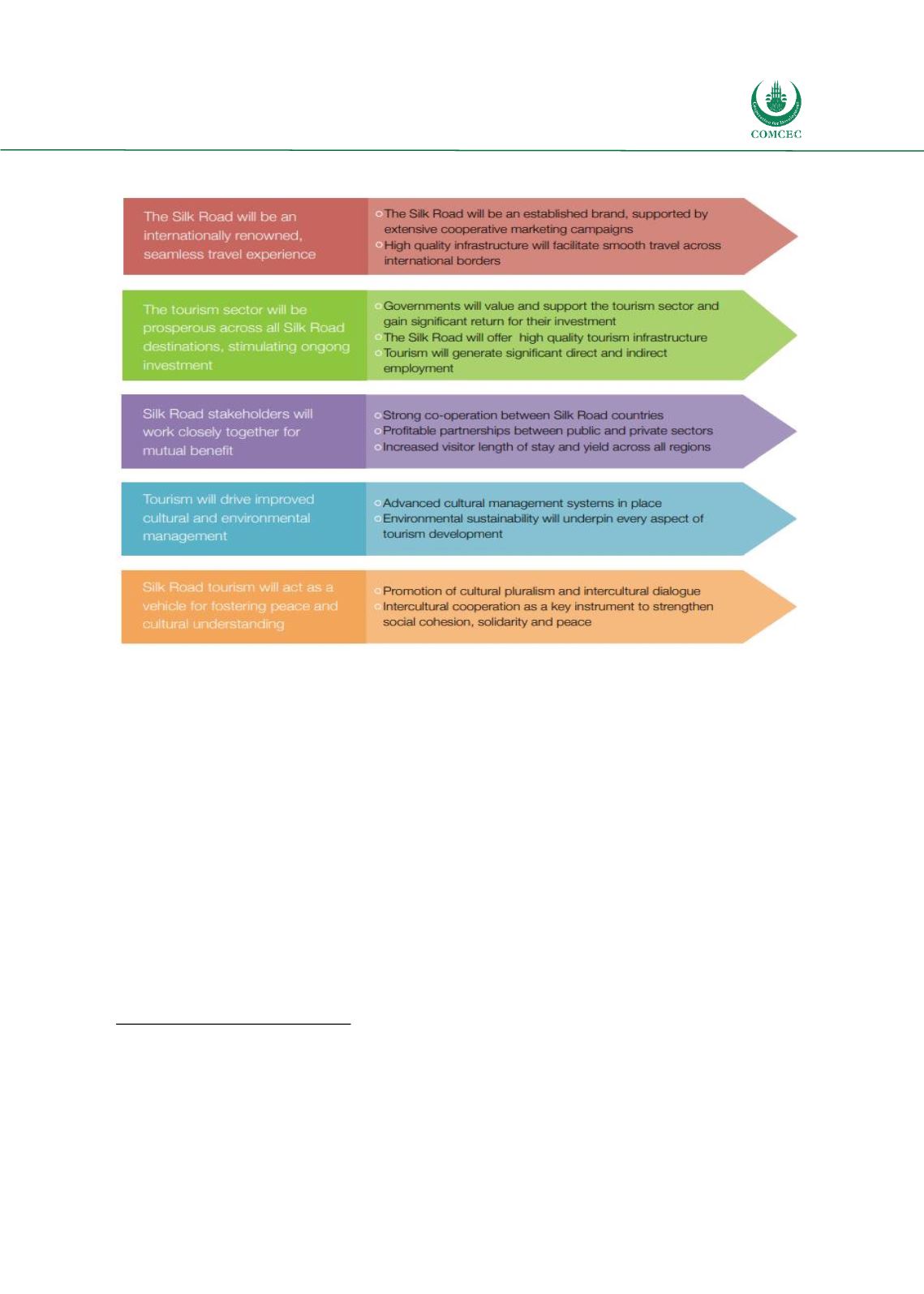

Sustainable Destination Management
Strategies in the OIC Member Countries
115
Figure 37: Silk Road Vision
381
Source: UNWTO
Establishment of the Silk Road Initiative
The countries of the Turkic-speaking tourism corridor later joined the United Nations World
Tourism Organization (UNWTO). Turkey joined in 1975; Kazakhstan, Kyrgyzstan, and
Uzbekistan in 1993, and Azerbaijan in 2001.
382
All of them are currently part of the UNWTO Silk
Road Initiative.
383
UNWTO’s role in facilitating tourism along the Silk Road dates back to 1994,
when some 19 countries, early-adopters, were called for the
“peaceful and fruitful re-birth of
these legendary routes as one of the world’s richest cultural tourism destinations.”
384
In 1994,
a UNWTO meeting was held in Samarkand, and
The
Samarkand Declaration on Silk Road
Tourism
was adopted in 1999. The subsequent
Khiva Declaration
called upon the nations of
Central Asia to preserve their cultural and natural heritage. Ongoing initiatives stress the
advantages of sustainable tourism and outline specific steps to stimulate cultural and ecological
tourism in the emerging destinations of the Silk Road. The opening of a Silk Road Support Office
381
The diagram from the "Silk Road Action Plan 2016/2017," UNWTO, last modified 2016,
http://cf.cdn.unwto.org/sites/all/files/docpdf/sr2016web.pdf.382
List of 158 Member States of the UNWTO and the year of admission in the Organization.
Retrieved from "Member States,"
UNWTO, last modified October 13, 2019,
https://www2.unwto.org/members/states.383
Ibid.
384
Silk Road Action Plan 2014/2015. "Silk Road Action Plan 2014/2015," UNWTO, last modified 2014,
http://cf.cdn.unwto.org/sites/all/files/docpdf/silkroadactionplaningles.pdf.















